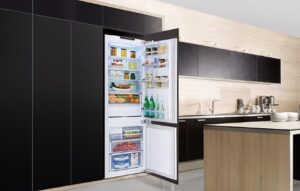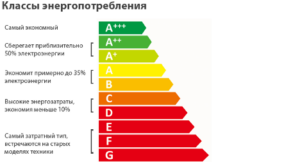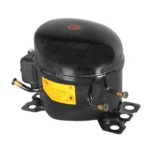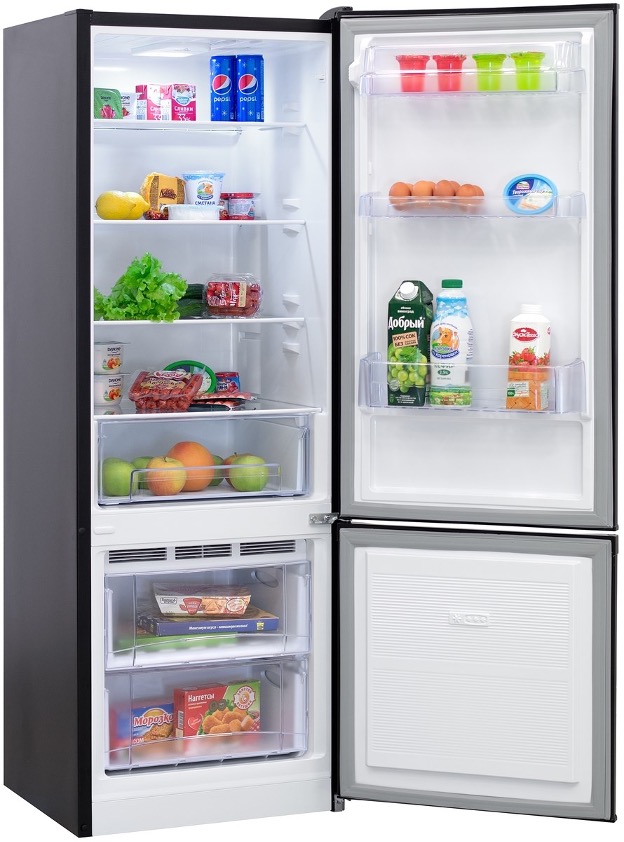Which built-in refrigerator is better to choose? Selection by parameters
There are several parameters that allow you to understand how to choose a built-in refrigerator. Pay attention to the dimensions, type, energy efficiency class and appearance. These and other criteria are described in detail in the article.
The content of the article
Types of built-in models
If you carefully consider which built-in refrigerator is best to choose, you need to understand the types of these devices. Unlike conventional units, such refrigerators are divided into 2 large classes:
- They are completely built-in - that is, the camera does not have a front panel as such. Its door is attached to the inner surface of the cabinet door. Thanks to this, the device fits perfectly into the design and looks quite attractive.
- Partially built-in - also installed in a niche, but is not covered by a cabinet door. When considering which built-in refrigerator to choose, you can choose this option. It usually costs less, but doesn't look as nice.
In turn, models that are fully built-in are divided into 2 groups:
- With runners - when opened, the door slides sideways on specially installed guides. Then you can open no more than 90 degrees.
- With hinges - the door is attached on hinges to the cabinet itself. It is possible to open at a greater angle than 90 degrees, so this design is more convenient.

A very important parameter that helps you understand how to choose a built-in refrigerator is the number of built-in chambers. There are 3 categories:
- Single door units – refrigerator compartment only. Suitable for drinks and foods that will only be stored for a few days. There could be a freezer too, it has a separate inner door. At the same time, the volume is small - within 30 liters. Although sometimes there is no freezer, you will have to buy and install it separately.
- Combi - with 2 or more chambers. This is the most popular option, so the choice of a built-in refrigerator often falls in this category. Such devices have a separate refrigerator and freezer compartment. It is noticeably larger - usually 2-3 drawers, and is located in the lower part.
- Side-by-side is a rare type. In this case, the compartments are located on the left and right (in the usual case, the freezer goes from the top or bottom). The capacity is maximum, but the cost is high. The choice of a built-in refrigerator in this category is noticeably less common. In addition, the devices are very large in size.
Dimensions and volume
Having studied the types of built-in refrigerators, you can begin to consider such an important parameter as volume and dimensions. As a rule, the width of the units reaches only 50-56 cm. At the same time, their depth is in the range of 50-55 cm. There are also more spacious varieties, they are more expensive and require individual ordering of furniture.
In the standard case, the refrigerator cabinet is 55 cm deep and 60 cm wide. Thanks to this, most devices will optimally fit into the parameters without additional expansion or contraction work.

When choosing, you should take into account the features of the built-in refrigerator. You also need to take into account that there is a gap of 4-5 cm between the wall of the cabinet and the installation itself.If there is a tile or oven after the cabinet, the minimum interval is 7 cm.
As for height, this parameter can vary greatly. The larger the parameter, the more spacious the chamber. But at the same time, you need to limit yourself to reasonable limits, taking into account your real needs and growth:
- If a large chamber is not needed, the quantity of products is minimal, and there is little space, models with a height of 120 cm are suitable.
- It’s clear which built-in refrigerator to choose if you have children or elderly people. It is better to purchase a unit with a height in the range of 120-160 cm.
- The most popular parameter is within 160-180 cm.
- If a large volume is required, you need to consider chambers with a height of 180 cm.
Energy efficiency
Another way to choose a built-in refrigerator for your home is related to energy efficiency. It is very simple to analyze it - you need to look at the markings in the registration certificate or on the sticker. The class is designated by a letter from A to G. The most effective are A+++, A++ and A+.
Next come similar designations with the letter B and in the same way up to G. For home use, it is quite possible to consider the first 2 classes, that is, A and B. It is worth remembering that each plus reduces energy consumption by 8-10%.

Defrosting system
The selection of a built-in refrigerator is also carried out taking into account the defrosting system. There are 3 main options:
- Manual defrosting is the simplest and most inexpensive model. They require weekly defrosting, and the process itself is quite labor-intensive.
- Drip defrosting - in this case, the ice produces drops that flow down and fall into a separate container.
- No Frost – ice forms behind the chamber wall and then melts thanks to the running fan.Everything happens automatically, labor costs are minimal. On the other hand, the air in the chamber is quite dry, and food quickly loses moisture.
There are other options for a built-in refrigerator, for example, a control panel. It can be traditionally mechanical and electronic. When choosing, you should also take into account the aesthetic aspect - how well the camera will fit into the interior. If you take into account all the described criteria, the purchase will definitely be successful.





